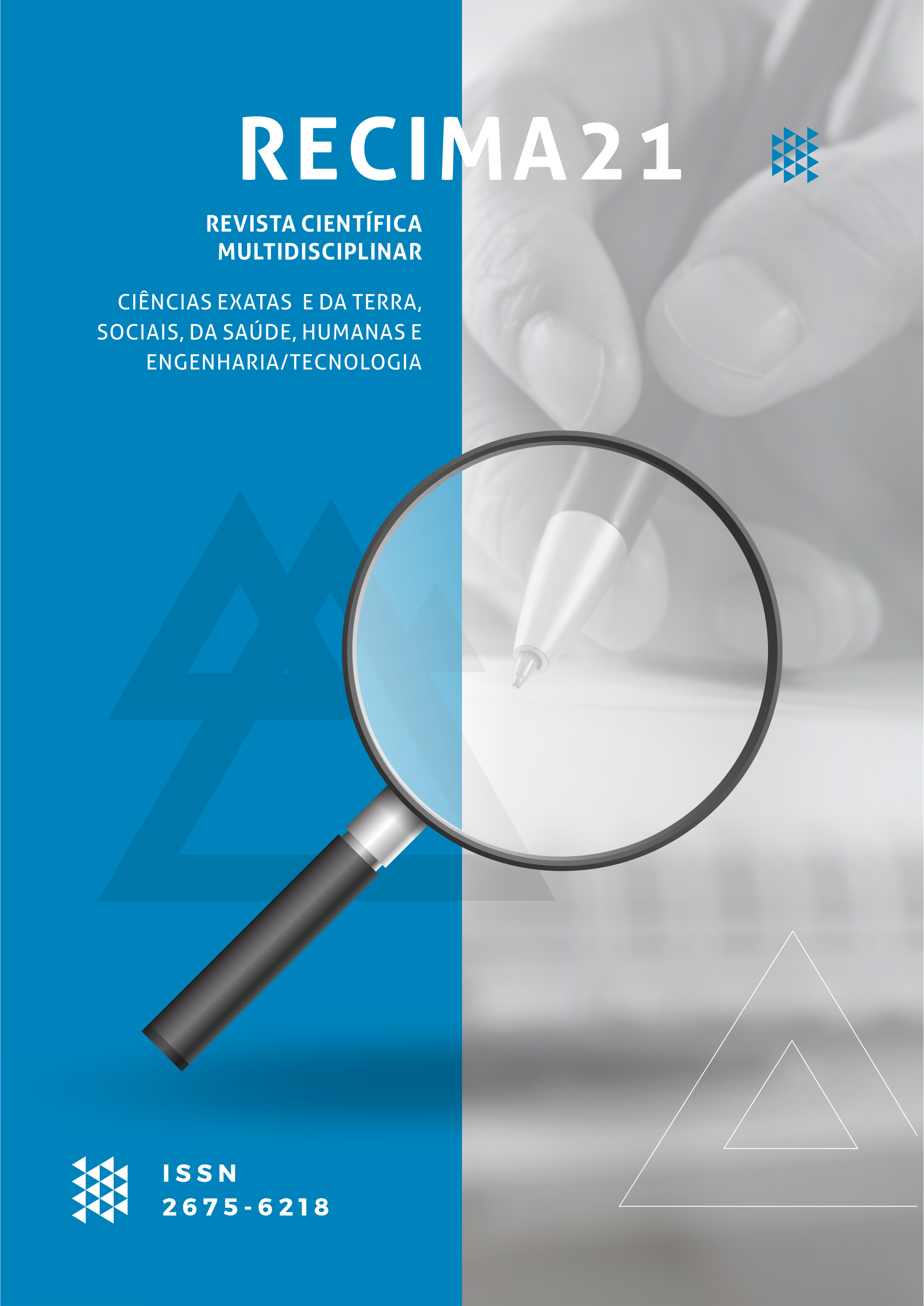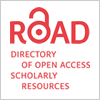NEUROVISUAL DISODERS CAUSED BY BLUE LIGHT
DOI:
https://doi.org/10.47820/recima21.v3i3.1247Keywords:
Vision disorders, Autism, Smartphone, InsomniaAbstract
The excessive use of technologies today can cause considerable changes in the neurovisual system. The excessive exposed of light blue through smartphone screens and monitors promove any changes to visual and eye health: irritability, low development, sleep and interpersonal relationships troubles. The ocular and systemic changes are attributed to exposure to blue light emitted by equipments. LED (Light Emitting Diode) used on monitors, cell phone screens and lamps emiting long blue ligth wave. Studies demonstrate to behavioral changes similar to autism spectrum disorders in exposure to technologies between 1 and 3 years of age. This papper is a bibliographic review and articles indexed on the Scielo, Bireme and Google Scholar platforms, we seek to compile and elucidate the potential damages caused by excessive and indiscriminate exposure to blue light.
Downloads
References
ARIES, M. B. C.; BEGEMANN, S. H. A.; ZONNEVELDT, L.; TENNER, A. D. Retinal illuminance from vertical daylight openings in office spaces. In: RIGHT LIGHT, 5, 2002, Nice. Proceedings… Nice, 2002.
LAUREN, Paul. DANEMAN, Nick. SCHARTZ, Kevin. Association Between Screen Time Exposure in Children at 1 Year of Age and Autism Spectrum Disorder at 3 Years of Age. The Japan Environment and Children’s Study. Jama Aug 16,2021. DOI: 10.1001/jamapediatrics.2021.2770
AZEVEDO, J. C. Dependência Digital. 2a ed., Campos dos Goytacazes/RJ: Brasil Multicultural, 2017. CAMINHA, V.L.P.S.; [et al]. Autismo: vivências e caminhos. São Paulo: Blucher, 2016
AMORIN, Gessica. Autismo virtual: um fenômeno real e alarmante. 31/3/21. ISSN 2675-049X. Disponível em: <http://www.revistanursing.com.br/autismo-virtual-um-fenomeno-real-e-alarmante/>. Acesso em 15 de fevereiro de 2022.
BEHAR-COHEN, et al. Light-emitting diodes (LED) for domestic lighting: any risks for the eye? Prog Retin Eye Res. 2011 Jul;30(4):239-57. doi: 10.1016/j.preteyeres.2011.04.002. Epub 2011 May 14. PMID: 21600300.
BEZERRA, Artemir. Astenopia e suas consequências, mai.2018. Rev. Óptica Net
https://opticanet.com.br/secao/colunaseartigos/11869/astenopia-e-suas-consequencias
CZEISLER,1986. Bright Light Resets the Human Circadian Pacemaker Independent of the Timing of the Sleep-Wake Cycle, C.A., SLEEP RESEARCH 15: 266 (1986).
DALEY, Mike. Hindsight is 20/20/20: Protect Your Eyes from Digital Devices. VISION CONCIL.ORG. Disponível em: https://www.pcom.ph/sites/default/files/downloads/vc_digitaleyestrain_report2015.pdf
DIAS, Fabrizia M. A. et al. AUTISMO VIRTUAL: AS IMPLICAÇÕES DO USO EXCESSIVO DE SMARTPHONES E TABLETS POR CRIANÇAS E JOVENS. 2019. ANAL 24. Seminário Int. Edu. Tec. E Soc. 2019. Disponível em: <https://seer.faccat.br/index.php/redin/article/download/1455/918
Fotopigmento ajusta o relógio biológico. Cienc. Cult., São Paulo , v. 54, n. 2, p. 17, Oct. 2002 . Available from <http://cienciaecultura.bvs.br/scielo.php?script=sci_arttext&pid=S0009-67252002000200016&lng=en&nrm=iso>. access on 01 Mar. 2022.
KLIN, Ami. Autismo e síndrome de Asperger: uma visão geral. Brazilian Journal of Psychiatry [online]. 2006, v. 28, suppl 1 [Acessado 1 Março 2022] , pp. s3-s11. Disponível em: <https://doi.org/10.1590/S1516-44462006000500002>.
HOLZMAN, David C. “What's in a color? The unique human health effect of blue light.” Environmental health perspectives vol. 118,1 (2010): A22-7. doi:10.1289/ehp.118-a22
KUSHIMA, Association Between Screen Time Exposure in Children at 1 Year of Age and Autism Spectrum Disorder at 3 Years of Age. The Japan Environment and Children’s Study. Jama Network. 2022. Disponível em: <https://jamanetwork.com/journals/jamapediatrics/fullarticle/2788488>. Acesso em 15 de fevereiro de 2022.
LAMPHAR, Héctor A. S. KOCIFAJ, Miroslav. Light Pollution in Ultraviolet and Visible Spectrum: Effect on Different Visual Perceptions. 2013. Disponível em: <https://journals.plos.org/plosone/article/file?id=10.1371/journal.pone.0056563&type=printable>. Acesso em 17 de fevereiro de 2022.
LAMPHAR, HAS. Ergoftalmologia: analisis de los factores que inciden en la astenopia de los trabajadores de inspeccion visual en la industria electrónica de ciudad de Juárez. Ciencia & Trabajo, 2006; 21: 135-140.
MELLO, Marcio Makiyama. Sistema de análise de transmitâncias em lentes solares. 2014. Dissertação (Mestrado em Processamento de Sinais de Instrumentação) - Escola de Engenharia de São Carlos, Universidade de São Paulo, São Carlos, 2014. doi:10.11606/D.18.2014.tde-21052014- 075547. Acesso em: 08 ago. 2021.
NOTOMI, Eduardo H. INFLUÊNCIA DA LUZ AZUL SOBRE O SONO. 2019. Universidade Tecnológica Federal do Paraná. Disponível em: <http://riut.utfpr.edu.br/jspui/bitstream/1/17548/1/CT_CEEST_XXXVII_2019_15.pdf>. Acesso em 16 de fevereiro de 2022.
OESTREICHER, L.M. and Heffler, K.F. Causation model of autism: Audiovisual brain specialization in infancy competes with social brain networks. Medical hypotheses, 2015. Disponível em: < https://pubmed.ncbi.nlm.nih.gov/26146132/>.
RAMOS, Luís F. F. et al. Espectrofotometria de lentes oftálmicas filtrantes coloridas sob radiação ultravioleta a e luz visível. 2003. Disponível em: <https://www.scielo.br/j/abo/a/9r8tt4KRKH64Pz68bLxHqjg/?lang=pt>. Acesso em 15 de fevereiro de 2022.
SHANANHAN, T. L.; CZEISLER, C. A. Physiological effects of light on human circadian pacemaker. Sem Perinatal, v. 24, n. 4, 2000. p. 299-320.
SONODA, Rodrigo. et al. Optologia III – Aprendizagem. Florianópolis: C.Autores, 2021.
SONODA, R.; DA SILVA, F. K. UV E A PROTEÇÃO EM LENTES DE ÓCULOS. RECIMA21 - Revista Científica Multidisciplinar - ISSN 2675-6218, [S. l.], v. 2, n. 7, p. e27583, 2021. DOI: 10.47820/recima21.v2i7.583. Disponível em: https://recima21.com.br/index.php/recima21/article/view/583. Acesso em: 10 mar. 2022.
STRINGUETA, Paulo Cesar. et al. Luteína: propriedades antioxidantes e benefícios à saúde. Alimentos e Nutrição Araraquara. 2006. Disponível em: <http://200.145.71.150/seer/index.php/alimentos/article/download/268/261>. Acesso em 17 de janeiro de 2022.
VANDEWALLE, GUILLES. Tends in Cognitive Neuroscience- Volume 13, Issue 10, October 2009, Pages 429-438. Disponível em: https://www.sciencedirect.com/science/article/abs/pii/S1364661309001685#!
ZAMFIR, M. T. The consumption of virtual environment more than 4 hours/day, in the children between 0-3 years old, can cause a syndrome similar with Autism Spectrum Disorder. Journal os Romanian Literacy Studies. Issue n. 13, page 953-968, page 13, 2018
Downloads
Published
How to Cite
Issue
Section
Categories
License
Copyright (c) 2022 RECIMA21 - Revista Científica Multidisciplinar - ISSN 2675-6218

This work is licensed under a Creative Commons Attribution 4.0 International License.
Os direitos autorais dos artigos/resenhas/TCCs publicados pertecem à revista RECIMA21, e seguem o padrão Creative Commons (CC BY 4.0), permitindo a cópia ou reprodução, desde que cite a fonte e respeite os direitos dos autores e contenham menção aos mesmos nos créditos. Toda e qualquer obra publicada na revista, seu conteúdo é de responsabilidade dos autores, cabendo a RECIMA21 apenas ser o veículo de divulgação, seguindo os padrões nacionais e internacionais de publicação.

 Clique para ver detalhes
Clique para ver detalhes 











